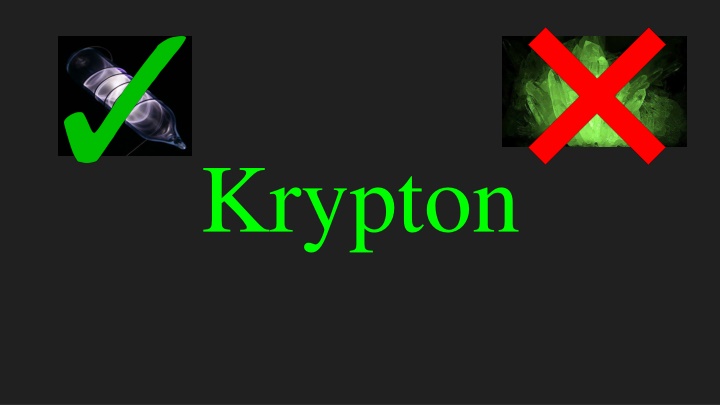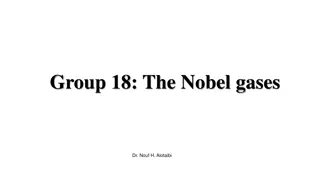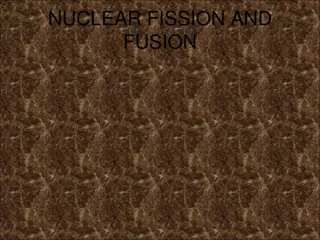
Fascinating Insights into Krypton Element and Its Properties
Unveil the intriguing facts about Krypton, a noble gas discovered in 1898 by Ramsay and William. This element, with atomic number 36 and symbol Kr, is widely used for various applications such as fluorescent lights and high-speed photography. Explore its origin, properties, and more in this comprehensive guide.
Download Presentation

Please find below an Image/Link to download the presentation.
The content on the website is provided AS IS for your information and personal use only. It may not be sold, licensed, or shared on other websites without obtaining consent from the author. If you encounter any issues during the download, it is possible that the publisher has removed the file from their server.
You are allowed to download the files provided on this website for personal or commercial use, subject to the condition that they are used lawfully. All files are the property of their respective owners.
The content on the website is provided AS IS for your information and personal use only. It may not be sold, licensed, or shared on other websites without obtaining consent from the author.
E N D
Presentation Transcript
Atomic #: 36 Atomic Mass:83.8 Symbol: Kr Name: Krypton
Krypton's Origin With the discovery of the noble gas argon, which was extracted from air. William Ramsay and Morris William believed this must belong to a new group of elements. They decided others were likely to be hidden in the argon and by a process of liquefaction and evaporation they discovered krypton in the afternoon of May 30th 1898 . The name is derived from the Greek 'kryptos', meaning hidden.
Properties Appearance: No Color or smell Non reactive with everything but fluorine gas. Uses: Commercially used as a filling gas for energy-saving fluorescent lights. It is also used in some flash lamps used for high- speed photography. It s reactive enough to form some chemical compounds. For example, krypton fluoride which is used in some lasers. Radioactive krypton was used during the Cold War to estimate Soviet nuclear production. Obtainability: It is extracted by distillation of air that has been cooled until it is a liquid
Bibliography http://www.rsc.org/periodic- table/element/36/krypton


